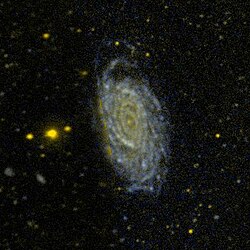
NGC 98 is a barred spiral galaxy in the Phoenix constellation. The galaxy NGC 98 was discovered on September 6, 1834 by the British astronomer John Frederick William Herschel.

NGC 99 is a spiral galaxy in the constellation Pisces. It was discovered on 8 October 1883 by the French astronomer Édouard Stephan.
NGC 6850 is a barred lenticular galaxy in the constellation Telescopium, discovered by John Herschel in 1836.

NGC 81 is a lenticular galaxy estimated to be about 270 million light-years away in the constellation of Andromeda.
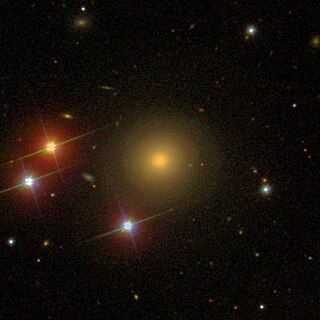
NGC 83 is an elliptical galaxy estimated to be about 260 million light-years away in the constellation of Andromeda. It was discovered by John Herschel in 1828 and its apparent magnitude is 14.2.
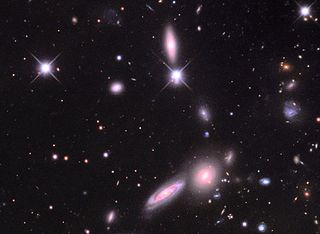
NGC 85 is an interacting spiral or lenticular galaxy estimated to be about 200 million light-years away in the constellation of Andromeda. It was discovered by Ralph Copeland in 1873 and its apparent magnitude is 15.7. The galaxy appears to be interacting with the companion spiral IC 1546.

NGC 86 is a lenticular galaxy estimated to be between 275 and 300 million light-years away in the constellation of Andromeda. It was discovered by Guillaume Bigourdan in 1884 and its apparent magnitude is 14.9.

NGC 96 is a lenticular galaxy estimated to be about 290 million light-years away in the constellation of Andromeda. It was discovered by Guillaume Bigourdan in 1884 and its apparent magnitude is 17.
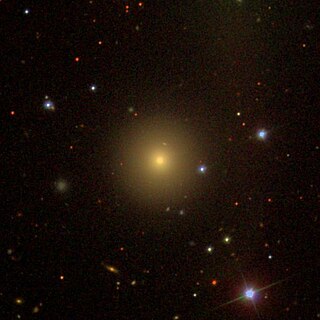
NGC 97 is an elliptical galaxy estimated to be about 230 million light-years away in the constellation of Andromeda. It was discovered by John Herschel in 1828 and its apparent magnitude is 13.5.

NGC102 is a lenticular galaxy estimated to be about 330 million light-years away in the constellation of Cetus. It was discovered by Francis Leavenworth in 1886 and its apparent magnitude is 14.

NGC 106 is a lenticular galaxy estimated to be about 270 million light-years away in the constellation of Pisces. It was discovered by Francis Leavenworth in 1886 and its apparent magnitude is 14.5.
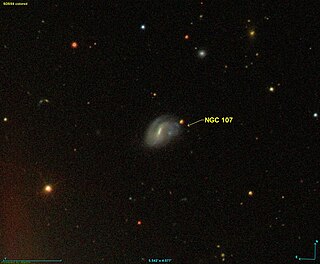
NGC 107 is a spiral galaxy estimated to be about 280 million light-years away in the constellation of Cetus. It was discovered by Otto Struve in 1866 and its magnitude is 14.2.

NGC 109 is a spiral galaxy estimated to be about 240 million light-years away in the constellation of Andromeda. It was discovered by Heinrich d'Arrest in 1861 and its magnitude is 13.7.
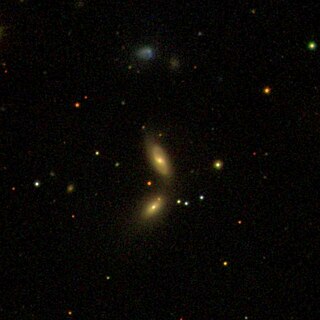
NGC 94 is a lenticular galaxy in the constellation Andromeda. It was discovered by Guillaume Bigourdan in 1884. This object is extremely faint and small. A little above the galaxy is NGC 96. NGC 94 is about 260 million light-years away and 50,000 light-years across.
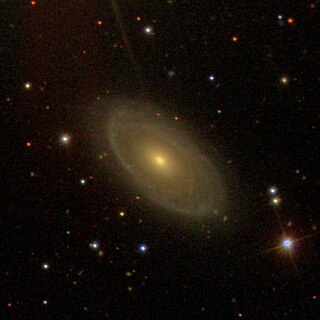
NGC 160 is a lenticular galaxy in the Andromeda constellation. It was discovered on December 5, 1785, by William Herschel.
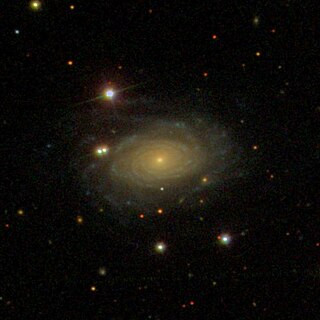
NGC 251 is a spiral galaxy in the constellation of Pisces. It was discovered on October 15, 1784, by Frederick William Herschel.
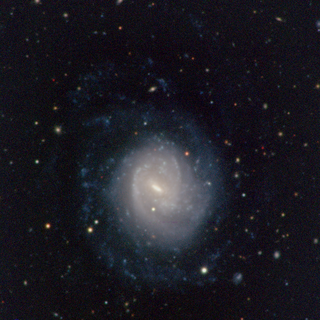
NGC 255 is a barred spiral galaxy in the constellation Cetus. It was discovered on November 27, 1785, by Frederick William Herschel.

NGC 257 is a spiral galaxy in the Pisces constellation. It was discovered on December 29, 1790, by Frederick William Herschel.
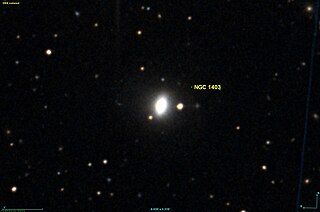
NGC 1403 is a lenticular or elliptical galaxy in the constellation Eridanus. It was discovered in 1886 by Francis Preserved Leavenworth. It was thought to be a "very faint, extremely small, nebulous star" by John Louis Emil Dreyer, the compiler of the New General Catalogue.

NGC 1077 is a spiral galaxy in the constellation Perseus. It was discovered on 16 August 1886 by Lewis A. Swift. It was described as "very faint, pretty large, extended" by John Louis Emil Dreyer, the compiler of the New General Catalogue.
